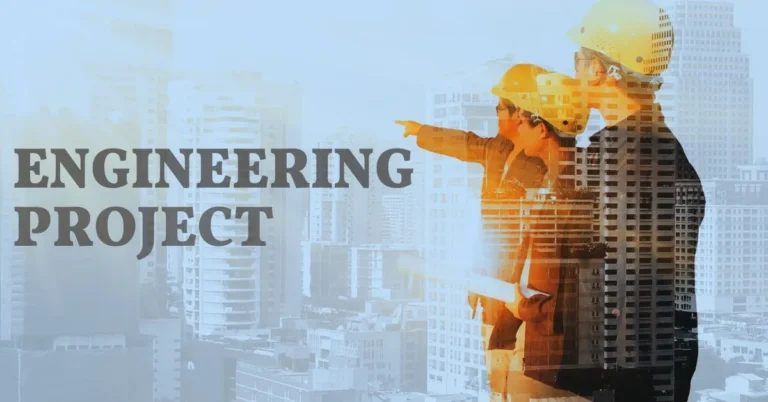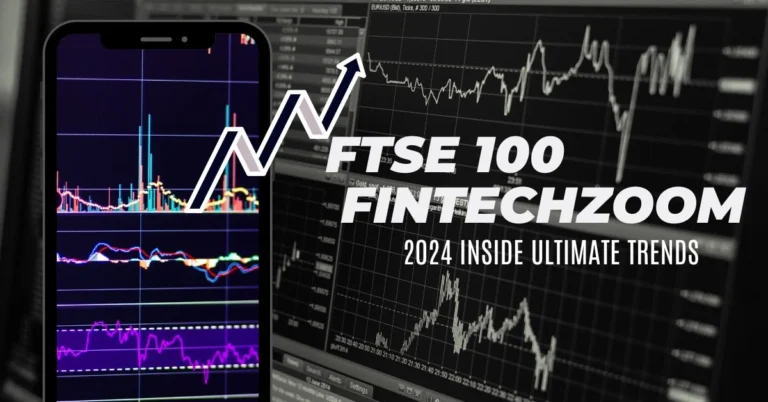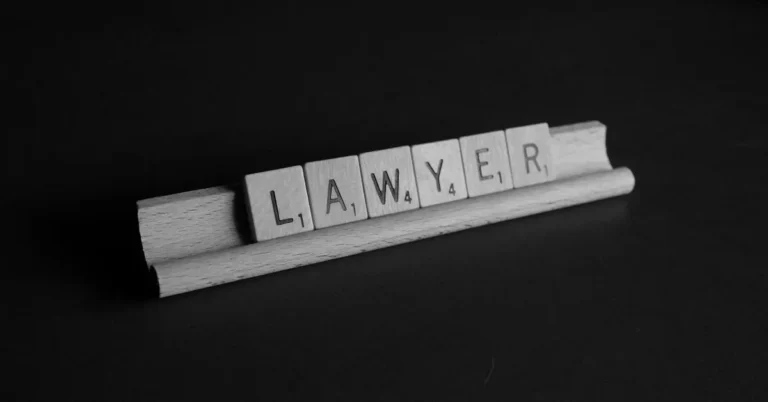Role Of Stichting Bouwresearch In The Dutch Construction Industry
Are you curious about the driving force behind the innovations in the construction industry? Ever wondered how sustainable practices are reshaping the way we build our world? Look no further than Stichting Research, commonly referred to as SBR, which stands as a pivotal entity in the realm of construction research and sustainable practices within the Netherlands. Established in 1959, this dynamic organization has been at the forefront of revolutionizing construction methods and promoting eco-friendly solutions. But what exactly is SBR, and what role does it play in shaping the future of construction?
Let’s delve into its fascinating journey, from its humble beginnings to its impactful initiatives, and uncover the secrets behind its enduring legacy. So, grab a seat and join us on a journey through the captivating world of SBR.
History and Background
The Bouwresearch Foundation, established in 1959, aimed to drive research into innovative construction methods, with former minister Herman Witte serving as its inaugural chairman. Stemming from the post-World War II reconstruction era, both the Bouwresearch Foundation and its later merger partner, the CUR Civil Engineering Center, emerged to address a significant shortage of knowledge about key building materials such as reinforced and prestressed concrete. With construction demand soaring and a limited understanding of material behaviours, the CUR sought to equip construction companies with essential knowledge, fostering a culture of mutual learning among small firms as new construction methods rapidly evolved.
Initially headquartered in Rotterdam’s Groothandelsgebouw, the Bouwresearch Foundation underwent significant development, eventually rebranding as SBR in 2003 under the leadership of engineer Jack de Leeuw. The foundation’s publication arm, the Construction Research Foundation, played a pivotal role in disseminating vital construction industry knowledge through various books and standards, covering topics like equipment management, cost control, and building security. Notably, SBR’s contributions extended to setting standards for vibrations in building installations, solidifying its reputation as a leading authority in construction practices and norms.
In 2013, Stichting Bouwresearch merged with CURnet to form SBRCURnet, located at Delft University of Technology’s De Bouwcampus, under the leadership of Jeannette Baljeu. Serving as a knowledge partner, SBRCURnet collaborated with industry committees to develop and document new construction and civil engineering knowledge, providing valuable resources like the SBR Reference Details and Info Sheets. However, funding challenges led to SBRCURnet’s dissolution as an independent entity in 2017, with its activities in civil engineering, road construction, and hydraulic engineering transferred to CROW, while those related to the built environment were taken over by the construction and installation technology knowledge institute, ISSO, in 2018. Despite its closure, SBRCURnet’s legacy endures through its significant contributions to advancing construction industry knowledge and practices.
Role and Impact in the Construction Industry
SBR plays a crucial role in the construction industry by promoting sustainable practices and driving innovation. Through their research, education, and advocacy efforts, they influence industry standards and policies, shaping the direction of the construction sector towards more sustainable and efficient practices. By fostering collaboration among industry stakeholders and facilitating knowledge exchange, it empowers the construction industry to address challenges and embrace opportunities for positive change.
Their impact extends beyond the industry to benefit society as a whole. By promoting sustainable construction practices, SBR contributes to the creation of healthier, more resilient communities and environments. Through their initiatives, they strive to build a future where construction projects are not only efficient and cost-effective but also environmentally friendly and socially responsible, leaving a lasting legacy for generations to come.
Key Initiatives and Projects
- Focus Areas and Objectives: SBR directs its efforts towards key focus areas and objectives aimed at addressing critical challenges and opportunities within the construction industry.
- Strategic Priorities: Their initiatives encompass a wide range of strategic priorities, including promoting energy efficiency, enhancing building resilience, and advancing digital construction technologies.
- Innovative Solutions: Through their projects, they develop and implement innovative solutions to tackle industry challenges, driving progress and innovation in the construction sector.
- Collaborative Approach: They adopt a collaborative approach to project implementation, engaging with industry stakeholders, research institutions, and governmental agencies to leverage collective expertise and resources.
- Impactful Outcomes: SBR’s initiatives yield impactful outcomes that benefit the industry, from improved construction practices to enhanced sustainability and resilience in the built environment.
Collaboration and Partnerships
Collaboration:
- Diverse Stakeholder Engagement: SBR fosters collaboration among various stakeholders, including industry professionals, research institutions, and governmental agencies.
- Knowledge Exchange: They create a platform for sharing ideas, expertise, and best practices, facilitating mutual learning and growth within the construction industry.
- Joint Initiatives: Through collaborative projects and initiatives, it leverages the collective efforts and resources of its partners to address industry challenges and drive sustainable solutions.
- Local and International Collaboration: They engage in partnerships at both local and international levels, working with local construction firms on pilot projects and collaborating with global research institutions on groundbreaking studies.
Partnerships:
- Strategic Alliances: SBR forges strategic alliances with industry stakeholders, research organizations, and governmental bodies to advance sustainability and innovation in the construction sector.
- Access to Expertise: Partnerships provide access to specialized expertise, allowing SBR to tap into additional resources and knowledge to address complex challenges.
- Amplified Impact: By partnering with like-minded organizations, it amplifies its impact and influence within the industry, driving positive change on a larger scale.
- Collaborative Projects: They collaborate with partners on research projects, pilot initiatives, and capacity-building programs, leveraging each other’s strengths to achieve common goals.
- Long-term Relationships: SBR values long-term partnerships built on trust, transparency, and shared values, fostering relationships that endure and evolve over time for the betterment of the construction industry.
Technological Advancements and Innovations
Incorporating Sustainable Technologies:
In the pursuit of sustainable construction practices, SBR remains at the forefront of technological advancements and innovations. The organization actively explores and promotes the integration of sustainable technologies across various stages of the construction process, from design and planning to implementation and operation. These technologies encompass a wide range of solutions aimed at enhancing efficiency, reducing environmental impact, and improving overall project outcomes.
Smart Building Solutions:
One area of focus for SBR is the adoption of smart building solutions that leverage Internet of Things (IoT) devices, sensors, and data analytics to optimize building performance and occupant comfort. Integrating smart technologies into building systems, such as HVAC, lighting, and security, enables buildings to operate more efficiently, respond dynamically to changing conditions, and minimize energy consumption while maximizing user satisfaction.
Renewable Energy Systems:
Another key technological advancement promoted by SBR is the integration of renewable energy systems into building design and infrastructure. From solar panels and wind turbines to geothermal heat pumps and biomass boilers, renewable energy technologies offer sustainable alternatives to traditional energy sources, reducing reliance on fossil fuels and mitigating greenhouse gas emissions. It advocates for the widespread adoption of renewable energy solutions in construction projects, facilitating their integration through research, education, and policy advocacy.
Building Information Modeling (BIM):
Building Information Modeling (BIM) represents a transformative technology that revolutionizes the way construction projects are planned, designed, and executed. It promotes the use of BIM tools and methodologies to enhance collaboration, coordination, and communication among project stakeholders, resulting in more efficient workflows, reduced errors, and improved project outcomes. By embracing BIM, construction professionals can visualize, simulate, and optimize building designs, leading to cost savings, time efficiency, and enhanced sustainability.
Sustainable Materials and Construction Methods:
In addition to advanced technologies, SBR explores innovative materials and construction methods that promote sustainability and resilience in the built environment. This includes the development of eco-friendly building materials, such as recycled aggregates, bio-based composites, and low-carbon cement, as well as the implementation of prefabrication, modular construction, and off-site manufacturing techniques to minimize waste, optimize resource use, and accelerate project delivery. By championing the adoption of sustainable materials and construction methods, it drives positive change and innovation in the construction industry, paving the way for a more sustainable and resilient built environment.
Digital Construction Tools and Workflows:
Digital construction tools and workflows play a crucial role in streamlining project management, improving productivity, and enhancing collaboration in the construction industry. SBR promotes the use of digital technologies, such as construction management software, drone imaging, and virtual reality simulations, to optimize project planning, scheduling, and execution. By embracing digital construction tools and workflows, construction professionals can minimize errors, reduce rework, and optimize resource allocation, leading to more efficient and cost-effective project delivery.
Challenges and Future Directions
Challenges:
1. Resource Scarcity:
The construction industry faces challenges related to the scarcity of raw materials and resources, including timber, steel, and aggregates. It aims to address these challenges by promoting the use of sustainable materials, recycling practices, and alternative construction methods to mitigate resource depletion.
2. Climate Change:
Climate change poses significant risks to the construction sector, including increased frequency and intensity of extreme weather events, rising sea levels, and changing temperature patterns. SBR focuses on developing climate-resilient infrastructure, improving building design standards, and advocating for policies that mitigate the impact of climate change on the built environment.
3. Urbanization:
Rapid urbanization presents challenges such as overcrowding, inadequate infrastructure, and pressure on natural resources. SBR works towards sustainable urban development by promoting compact, efficient, and resilient city designs, integrating green spaces, and enhancing public transportation systems to address the challenges of urban growth.
Future Directions:
1. Embracing Digitalization: The future of construction lies in embracing digitalization and technology integration to improve efficiency, productivity, and project delivery. It focuses on leveraging Building Information Modeling (BIM), robotics, and artificial intelligence to streamline construction processes, reduce waste, and enhance project outcomes.
2. Advancing Sustainable Practices: Sustainable construction practices will continue to be a priority for the industry, with a focus on reducing carbon emissions, minimizing waste generation, and optimizing resource use. SBR leads the way in developing innovative sustainable solutions, fostering circular economy principles, and promoting green building certifications to create a more environmentally friendly built environment.
3. Addressing Social Equity: In addition to environmental sustainability, it recognizes the importance of addressing social equity and inclusivity in the construction sector. Future directions include promoting diversity and inclusion in the workforce, supporting affordable housing initiatives, and advocating for equitable access to infrastructure and amenities in urban areas.
4. Enhancing Resilience: Building resilience to climate change and other external shocks will be crucial for the future of the construction industry. It focuses on developing resilient infrastructure designs, incorporating nature-based solutions, and implementing disaster risk reduction measures to enhance the resilience of buildings and communities against future challenges.
5. Collaboration and Knowledge Sharing: Collaboration and knowledge sharing will remain essential for addressing complex challenges and driving innovation in the construction sector. SBR continues to foster partnerships with industry stakeholders, research institutions, and governmental agencies to facilitate knowledge exchange, capacity building, and collaborative problem-solving for a sustainable future.
Founding Principles and Values
SBR was founded on a set of core principles and values aimed at driving innovation, fostering collaboration, and advancing sustainable practices within the construction industry. At its inception, the organization sought to address the pressing need for research and development in the sector, recognizing the potential for research-driven solutions to tackle industry challenges and drive positive change. Key values such as integrity, excellence, and sustainability have guided SBR’s mission and activities since its establishment, shaping its strategic priorities and organizational culture.
Leadership and Governance Structure
At the helm of SBR is a dedicated leadership team comprising industry experts, academics, and thought leaders who oversee the organization’s strategic direction and decision-making processes. Led by a board of directors elected from among its members, the organization operates under a transparent governance structure designed to ensure accountability, integrity, and effective leadership. Through regular meetings, consultations, and stakeholder engagements, the leadership team collaborates closely to steer toward its goals and objectives, upholding the organization’s mission and values at all times.
Membership and Participation
Membership is open to individuals, companies, and organizations operating within the construction industry who share a commitment to research, innovation, and sustainability. Members benefit from access to a wide range of resources, networks, and opportunities for professional development and collaboration. From industry professionals and researchers to government agencies and NGOs, it fosters a diverse and inclusive community of members who actively contribute to the organization’s initiatives and projects. Through participation in working groups, committees, and events, members engage in knowledge exchange, capacity building, and collective action aimed at advancing the construction sector’s sustainability agenda.
Services Offered by SBR
- Research and Development: It conducts research and development activities to advance knowledge and innovation in the construction industry. This includes studying new construction methods, materials, and technologies to improve efficiency, sustainability, and resilience.
- Consultancy Services: Provides consultancy services to construction companies, governmental agencies, and other stakeholders. This may involve advising on best practices, regulatory compliance, and strategic planning to optimize project outcomes.
- Training and Education: Offers training and educational programs for professionals in the construction industry. These programs cover a wide range of topics, including construction management, building codes, and sustainable practices, to enhance skills and knowledge.
- Standards and Guidelines: Develops and publishes standards, guidelines, and recommendations for the construction industry. These documents provide essential guidance on quality assurance, safety protocols, and technical specifications to ensure compliance and quality in construction projects.
- Information and Resources: It provides access to a wealth of information and resources related to the construction industry. This includes research reports, publications, technical articles, and case studies, which serve as valuable references for professionals in the field.
- Networking and Collaboration: SBR facilitates networking and collaboration opportunities for professionals in the construction industry. This includes organizing conferences, seminars, and workshops where industry stakeholders can exchange ideas, share experiences, and foster partnerships.
- Innovation Support: Supports innovation in the construction industry by promoting research, development, and adoption of new technologies and practices. This may involve funding research projects, incubating startups, and facilitating technology transfer initiatives.
- Policy Advocacy: SBR advocates for policies and regulations that promote sustainability, safety, and efficiency in the construction industry. This may involve engaging with policymakers, industry associations, and advocacy groups to influence decision-making and promote positive change.
Conclusion
In conclusion, SBR stands as a shining example of excellence and innovation in the realm of construction research and sustainable practices. Through its relentless pursuit of knowledge, collaboration, and progress, SBR has not only shaped the Dutch construction industry but also inspired positive change and transformation on a global scale. As we navigate the complexities of the modern world, SBR remains a guiding light, illuminating the path toward a brighter, more sustainable future for generations to come.
FAQs
What is the primary mission of SBR?
SBR is dedicated to promoting research and development within the construction industry, with a focus on driving innovation, fostering collaboration, and advancing sustainable practices.
How does SBR contribute to sustainable construction?
Through research, education, and advocacy, SBR promotes the adoption of environmentally friendly construction techniques, materials, and designs, leading to a greener and more sustainable built environment.
What role does SBR play in industry partnerships and collaborations?
SBR actively engages with industry stakeholders, research institutions, and government agencies to foster collaboration and knowledge-sharing, driving continuous improvement and progress in the construction sector.
What are some key projects and initiatives undertaken by SBR?
It focuses on a diverse range of projects and initiatives aimed at addressing critical challenges and opportunities within the construction industry, including promoting energy efficiency, enhancing building resilience, and advancing digital construction technologies.
How does SBR envision the future of the construction industry?
SBR remains committed to driving positive change and innovation within the construction industry, leveraging research, collaboration, and technological innovation to create a more sustainable, efficient, and resilient built environment.







